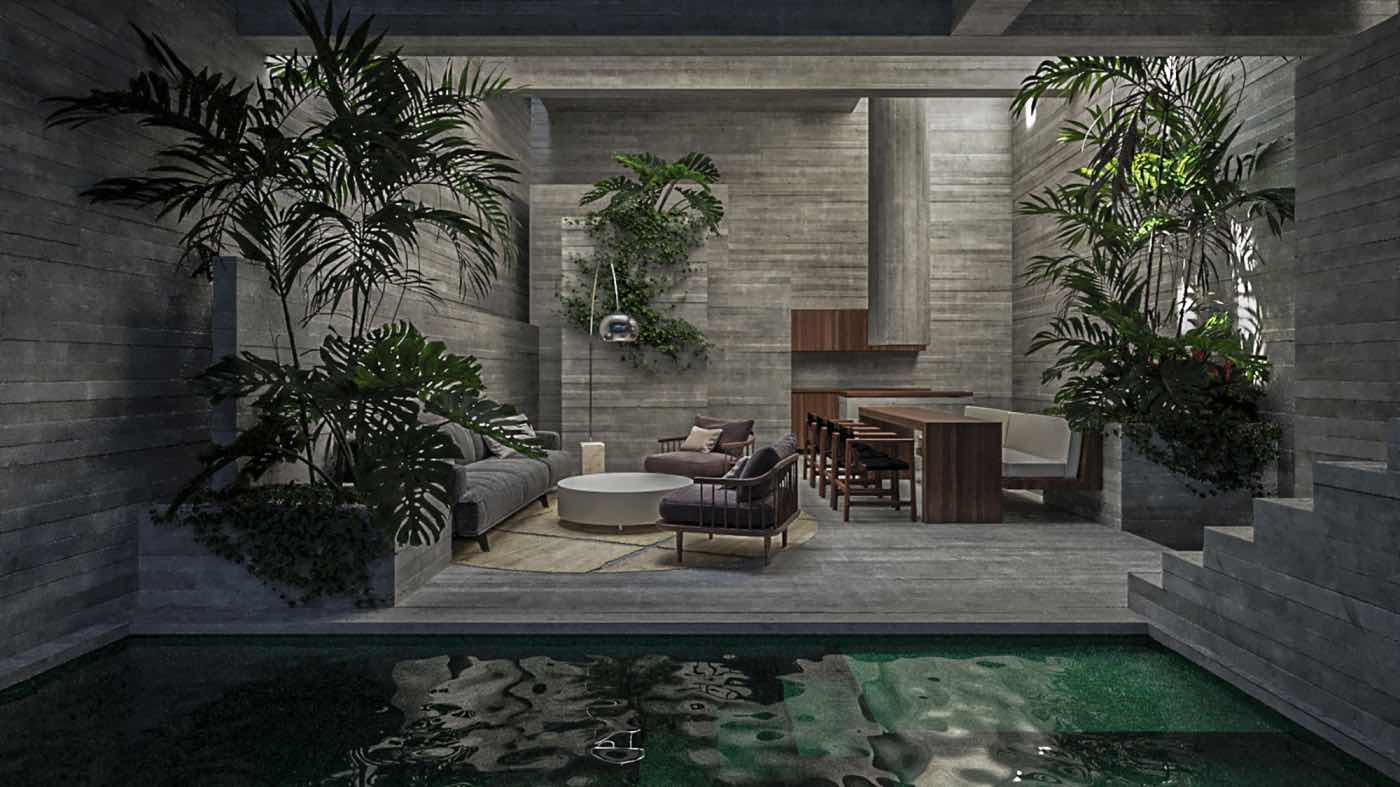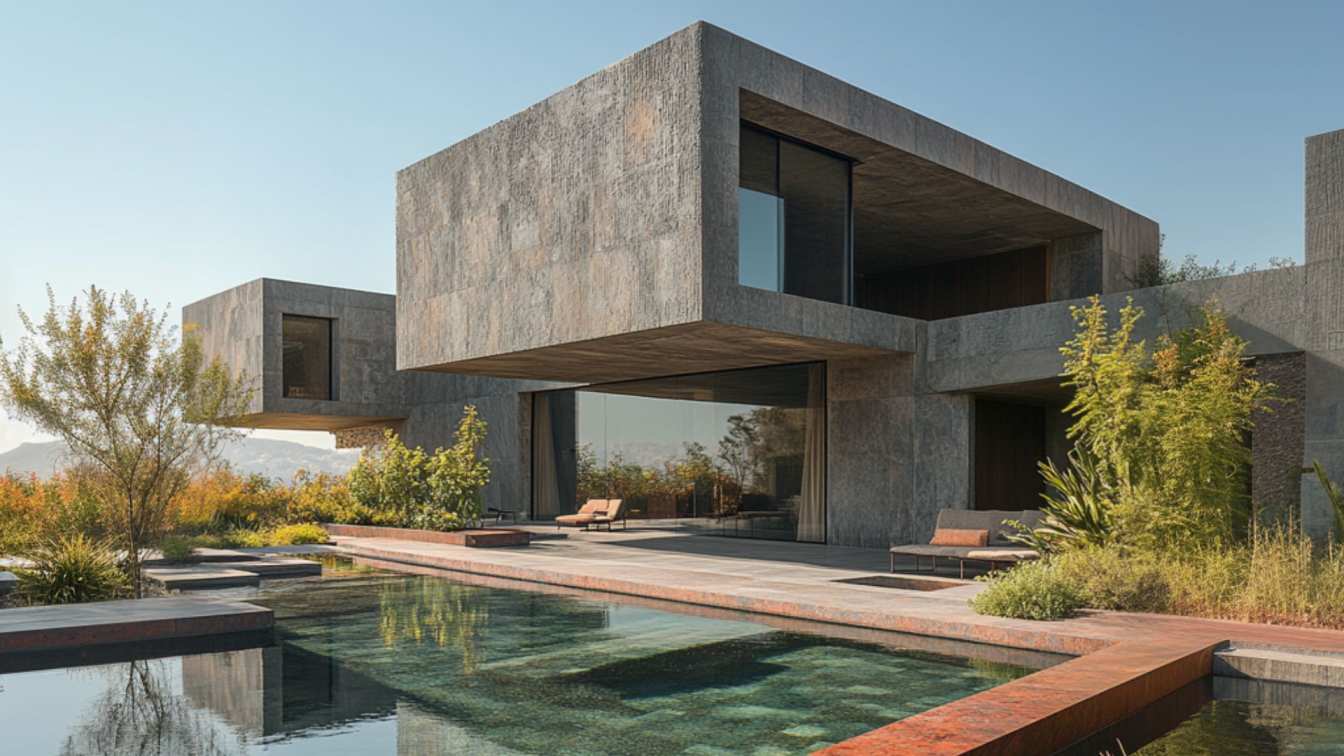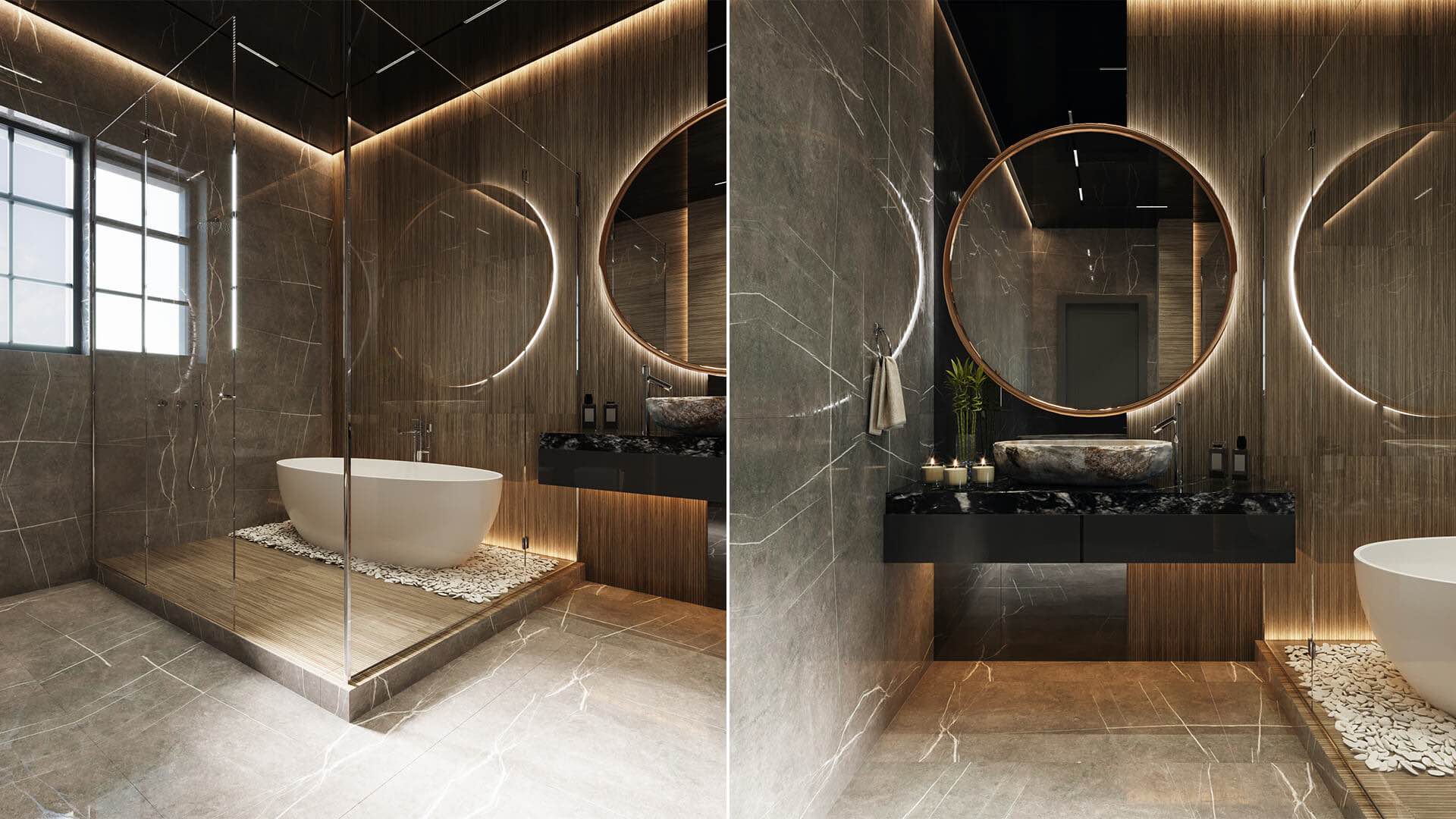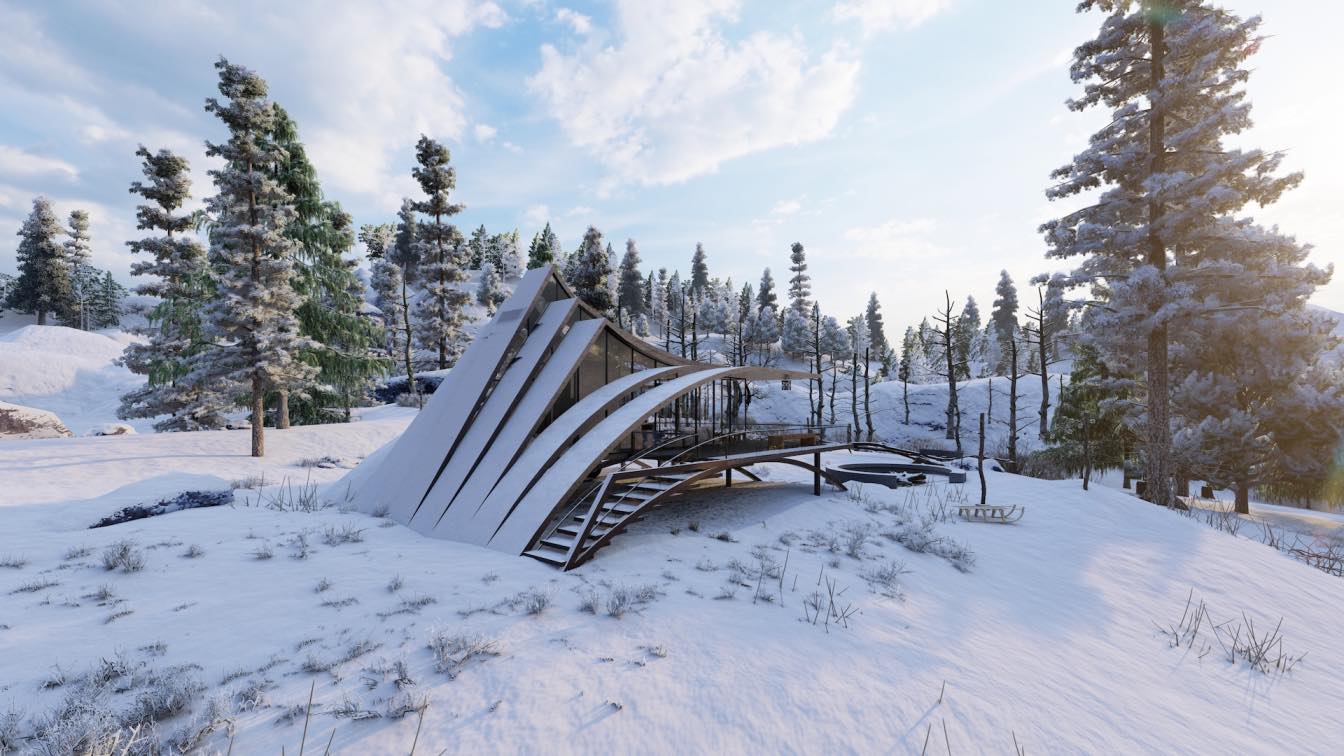Luis De Garrido: Without a doubt, the outstanding design of NADAL Eco-House is Luis De Garrido's top masterwork, and a turning point in the history of architecture, as it opens up a new way of understanding the built environment and a new architectural syntax.
The conceptual bases of the design of this house go back to the original compositional strategies of Andrea Palladio (Palazzo Valmarana), which few understood in their compositional essence, and few dared to follow, although they were later developed by Iannis Xenaquis (Casa de vacances François-Bernard Mache, Amorgos), and by Heikkinen and Komonen (Indigo Foundation, Guinea Conakry).
Luis De Garrido has used up to 17 different composing grid networks, in order to symbolize the strength of organized chaos. At first glance the different volumes of the house seem to be arranged in a chaotic way, however it is not, the whole forms a harmonious whole that retains the attention of the viewer and invites to analyze the compositional secrets of the house and enjoy with it.

- Architectural Solution
Nadal Eco-House is located in a privileged place a few meters from the Mediterranean Sea, on the coast of Mallorca, Spain.
The owners wish to have the maximum level of privacy, and at the same time to live in the most integrated way possible with Nature. That is why their house must be completely self-sufficient, and therefore capable of generating the energy, water and food they may need at all times.
The house has 3 levels. On the basement floor are located sewage treatment facilities, gray water and rainwater, and food storage rooms. On the ground floor are the living room, dining room, kitchen, two bedrooms, three bathrooms, garage, games room, and several rooms for flexible use. On the first floor is the master bedroom, two guest bedrooms, two bathrooms and a multipurpose room.

The house is located east-west in order to maximize solar radiation in winter, and to be able to provide the most effective sun protection in summer.
The special architectural structure of the house allows it to be self-regulated thermally every day of the year, maintaining a stable interior temperature, without the need to use mechanical conditioning devices. To behave properly both in winter (generating heat by itself) and in summer (generating fresh by itself) the house is able to reconfigure architecturally by itself in a very simply way(through windows, gates and sliding panels).

- Water self-sufficiency
Nadal Eco-House is self-sufficient in water. That is, you do not need to be connected to municipal water supply systems.
The water needed for human consumption and for irrigation is obtained from several complementary sources:
1. Groundwater. A drilling has been carried out in the ground in order to obtain water from underground aquifers, which can be used directly for irrigation.
2. Rainwater. The rainwater that falls on the roofs of the dwelling is collected and carried to an underground deposit.

The groundwater is mixed with rainwater and stored in a buried tank with a capacity of 15,000 liters, and then filtered and disinfected by means of an ultraviolet radiation system.
To be potable and drinkable, the resulting water is further treated by means of a triple membrane reverse osmosis system (which regulates the characteristics of the resulting water by means of an electronic processor), able to remove bacteria from the water (due to Small pore size). The resulting water has the same purity and content as mineral water. To top it off, the user can choose the mineral content at all times, simply by reprogramming the processor.

- Recycling gray water. The gray waters generated by the house are filtered, and are treated by means of a mechanical oxygenation system, and a natural lagooning system. The water thus obtained is mixed with water from aquifers and rainwater, and is used as irrigation for orchards and gardens.
- Recycling of sewage. The sewage is treated by means of a black filtration well, and they are used to make compost for the biological orchards.
- Energy self-sufficiency

Housing is self-sufficient energy. That is, you do not need to be connected to the mains..
This energy self-sufficiency has been achieved through a set of complementary strategies:
- The occupants of the house are aware of adopting a natural and simple way of life, avoiding energy waste, and surrounded by utensils and artifacts simply necessary.
- Optimum bioclimatic design has been made to minimize the need for energy. In the design of the house, all kinds of bioclimatic strategies have been used to ensure that it consumes the least amount of energy, is naturally illuminated, naturally ventilated, and thermally self-regulated, every day of the year. As a result of its special design, the house cools itself in summer, and heats itself in winter. In the same way, during the day the building is naturally illuminated, every day of the year, without the need for artificial luminaires.
![]()
- Only essential appliances have been incorporated in the building, which are also of very low electrical consumption.
- Artificial lighting systems based on luminescent oleds with very low energy consumption have been used.
- The kitchen and the refrigerator are fed with biogas generated by the fermentation of residues of organic matter from livestock. They also have an emergency photovoltaic electrical system, for specific cases.
![]()
- A photovoltaic system has been incorporated to generate the little electric energy that the home needs (5,000 watts). Photovoltaic solar panels have been integrated into the sloped roofs of some housing modules. In addition, a set of state-of-the-art electrical batteries, of great duration, and capable of storing the electrical energy generated by the photovoltaic panels, have been available.
- A set of solar thermal panels, integrated in the sloped roofs of some modules of the house, have been incorporated to generate the sanitary hot water that needs the housing and the hot water of the swimming pools.
- Food self-sufficiency

The house has several biological gardens, which provide basic food to its occupants. The Mediterranean climate of Mallorca allows several crops a year of cereals, legumes fruits and vegetables. And the arable land is more than enough to feed the occupants of the house, and the animals of the small farm that disposes. It should be noted that the wastewater is used to generate compost for the garden and garden, with the help of the ashes generated by the biomass boiler, and a composter located outside the house.
- Prefabricated structural system
The structure of the house has been made of reinforced concrete panels, which allows the total dismantling of the house, in order to facilitate the repair or reuse of all its components, including the structure itself.
- High bioclimatic level

Due to its advanced architectural design, the house is able to self-regulate thermally, maintaining a constant interior temperature, able to ensure maximum comfort and well-being to its occupants. The house maintains a stable temperature in its interior that oscillates between 24º C and 25º C every day of the year. That is why the house does not need mechanical heating systems or air conditioning.
In summer, the interior shutters and the exterior shutters of the south are partially closed, and the dwelling is illuminated by indirect solar radiation from the north (thus it is naturally illuminated but not heated). In winter, however, the shutters of the south are completely opened, and the house becomes a huge greenhouse, taking full advantage of solar radiation, and heating itself. 
- Integral waste disposal
The house has been built without generating residues, since the few residues generated have been used in the construction of the same. On the other hand, the organic waste that is generated during the use of the house is managed optimally and are used to make "compost" that serves as fertilizer for the surrounding orchards. On the other hand, the sewage is treated properly, and are also used, for fertilization of said orchards.
- Stimulate the well-being and happiness of the occupants of the dwelling
From a physical, emotional and psychological point of view, a set of general patterns can be identified, capable of guaranteeing the well-being and happiness of the people. These patterns have been taken into account, in an exhaustive way, in the design of Carolina Eco-House, which in this way becomes a sounding board, capable of encouraging and amplifying the happiness of its occupants.

1. Thermal stability
2. Seasonal thermal variation
3. Natural light
4. Technological simplicity and minimal maintenance
5. Natural materials
6. Simple and non-monotonous architectural design
7. Appropriate colors
8. Sense of security and privacy
9. Beauty
10. Absence of pathogens
11. Breathability (continuous natural ventilation)
12. Encourage human relationships
13. Self-sufficiency (energy, water, food)





















